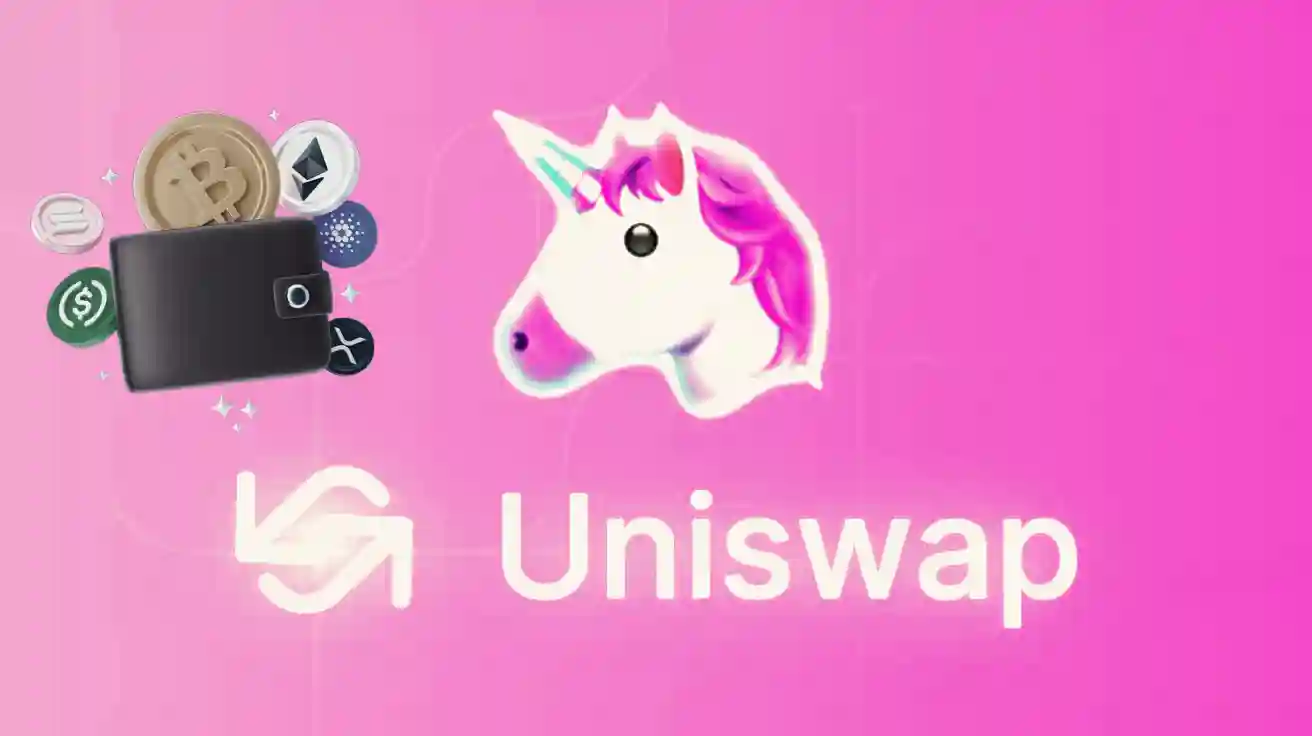Uniswap stands as a pioneering decentralized exchange (DEX) operating on the Ethereum blockchain, enabling users to seamlessly swap ERC-20 tokens without intermediaries. Launched in November 2018 by Hayden Adams, Uniswap has evolved into a cornerstone of the decentralized finance (DeFi) ecosystem, addressing liquidity challenges inherent in traditional DEXs.
Understanding Uniswap’s Mechanism
Traditional exchanges rely on order books to match buyers and sellers, which can lead to liquidity issues. Uniswap, however, employs an automated market maker (AMM) model, specifically the “Constant Product Market Maker Model.” This approach utilizes a simple equation: x * y = k, where ‘x’ and ‘y’ represent the quantities of two tokens in a liquidity pool, and ‘k’ is a constant. This formula ensures that the product of the two token quantities remains constant, allowing Uniswap to provide liquidity without the need for a traditional order book.
Key Features of Uniswap
- Permissionless Listing: Any ERC-20 token can be listed on Uniswap without approval. Users can create a new liquidity pool by supplying an equivalent value of ETH and the desired ERC-20 token.
- Liquidity Provision: Users, known as liquidity providers (LPs), can contribute to liquidity pools by depositing equal values of two tokens. In return, they receive liquidity tokens representing their share of the pool, entitling them to a portion of the 0.3% trading fee distributed among LPs.
- UNI Governance Token: Introduced in September 2020, the UNI token grants holders governance rights over the protocol, allowing them to vote on proposals and shape Uniswap’s future.
Evolution of Uniswap: V2 and V3
Uniswap has undergone significant upgrades to enhance its functionality:
- Uniswap V2 (May 2020): This version enabled direct ERC-20 to ERC-20 token swaps, eliminating the need for Wrapped Ether (WETH) as an intermediary. It also introduced support for previously incompatible tokens and included technical improvements to optimize user experience.
- Uniswap V3 (May 2021): The latest iteration introduced concentrated liquidity, allowing LPs to allocate liquidity within specific price ranges, thereby increasing capital efficiency. V3 also added multiple fee tiers to better accommodate varying degrees of risk and volatility associated with different token pairs.
Using Uniswap: A Step-by-Step Guide
Engaging with Uniswap requires an Ethereum-compatible wallet and some ETH to cover transaction fees. Here’s a simplified process:
- Connect Wallet: Visit the Uniswap interface and connect your wallet (e.g., MetaMask, WalletConnect).
- Select Tokens: Choose the tokens you wish to swap by specifying the input and output tokens.
- Enter Amount: Input the amount of the input token you want to exchange. The system will automatically calculate the corresponding amount of the output token.
- Review and Confirm: Review the transaction details, including the estimated gas fees, and confirm the swap.
- Finalize Transaction: Approve the transaction in your wallet and wait for it to be processed on the Ethereum network. Once confirmed, the swapped tokens will appear in your wallet.
Advanced Integrations and Tools
Uniswap’s open protocol has led to the development of various tools and interfaces to enhance user experience:
- InstaDApp: Allows users to add funds to Uniswap pools without accessing the official interface.
- Zapper.fi: Enables users to add liquidity using only ETH, simplifying the process by eliminating the need for pairing with another token.
3/
🦄 A liquidity migration contract and interface is available for Uniswap v2 LPs!
🍣 The migration portal works for Sushiswap LPs as well
🔖 Migration and LP guides can be found here: https://t.co/XibQxNMfuB
— Uniswap Labs 🦄 (@Uniswap) May 5, 2021
Challenges and Competitors
Despite its success, Uniswap faces challenges, particularly concerning Ethereum’s scalability issues, which can lead to high gas fees during network congestion. This has opened the door for competitors like PancakeSwap on the Binance Smart Chain, offering similar services with lower fees.
We’re thrilled to announce that UNI, the Uniswap Protocol governance token, is live now on Ethereum mainet!
Read more:https://t.co/RD3mwEUyHn
Ethereum Address: 0x1f9840a85d5af5bf1d1762f925bdaddc4201f984
— Uniswap Labs 🦄 (@Uniswap) September 17, 2020
Regulatory Considerations
As DeFi platforms like Uniswap grow, they attract regulatory attention. In May 2021, the Uniswap community proposed establishing a “political defense” fund to proactively address potential regulatory challenges, highlighting the need for legal and lobbying efforts to protect the DeFi space.
1/
🦄 We are thrilled to announce that Uniswap v3 is now live on Ethereum mainnet!https://t.co/liqYXtQoM2 has been updated to support v3.https://t.co/VeR2ueZfEk
— Uniswap Labs 🦄 (@Uniswap) May 5, 2021
Conclusion
Uniswap has revolutionized the way we perceive and interact with decentralized exchanges, offering a permissionless, efficient, and user-friendly platform for token swaps. Its continuous evolution and the introduction of features like concentrated liquidity and governance tokens underscore its commitment to innovation in the DeFi landscape. As the ecosystem matures, Uniswap’s role as a leading DEX is poised to expand, navigating challenges and setting benchmarks for decentralized trading platforms.



